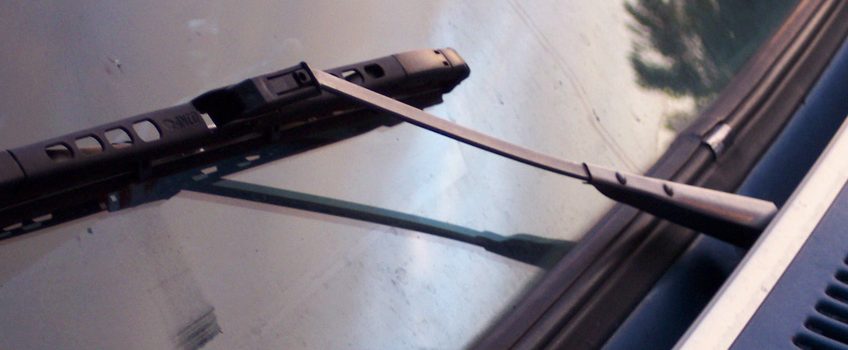How to Replace Wiper Blades
Difficulty: Easy
Duration: 5 minutes
How often: Every 6-12 months
Visibility is extremely important to safe driving. If your current wipers are not wiping well or leaving streaks, change them immediately.
Learning how to replace wiper blades is simple. You may be able to change your wiper blades with no tools. If not, here are the items you may need from your garage or your local NAPA AUTO PARTS Store:
- New wiper blades (usually packaged with wiper rubber and support structure)
- Tape measure
- Small pocket screwdriver
- Needle-nose pliers
- Anti-seize compound (optional)
Step 1 – Visit NAPA AUTO PARTS for the correct wiper blade replacement.
Your NAPA AUTO PARTS sales associate can help you find the correct wiper blade replacement for your year, make and model, or you can take one of your old blades in to the store. Some vehicles use different length wiper blades on the driver’s side versus the passenger’s side. For vehicles with a rear wiper, consider changing this blade at the same time.
Step 2 – Pull the wiper arm up and away from the car.
The blade and arm should now be sticking out perpendicular to the window. Some wiper arms will only come up two or three inches from the windshield. If your wiper arm only comes up a small amount, don’t force it. There should be a locking tab at the base of the wiper that will lock it in the raised position.
Step 3 – Match the existing connector to one of the connectors provided with the new blade.
The attachment is where the arm and blade meets. There are several styles of attachments. The three most common are the hook-slot connector, pin-type arm and straight-end connector. Replacement blades typically include a variety of connectors.
- Hook-slot connector: Swing the blade perpendicular to the arm so you can see the connector. You’ll find a tab at the connector that needs to be lifted or pushed to release the lock that holds the blade pivot in the hook slot. Once the tab is released, a firm shove toward the base of the arm will slide the blade out of the hook slot.
- Pin-type arm: Raise the arm and examine the locking tab that holds the blade onto the pin. You’ll either have to push the tab up from underneath the blade or lift the tab from the top with a small, flathead screwdriver. Once the tab unlocks the pin, pull the blade assembly with a sideways motion away from the arm. The new unit may simply lock onto the pin, or the new blade may include an adapter that locks into the blade opening and accepts pins in different sizes.
- Straight-end connector: The straight-end connector can be tricky. Sometimes you need to lift a tab on top of the existing blade with a screwdriver to clear the locking nub on the arm. You may also need to cock the old blade a few degrees out-of-parallel with the arm to slide it off the arm’s end.
Step 4 – Remove the windshield wiper blade from the arm at the attachment.
Depending on the connector type, remove the blade as outlined above. Once the old blade is off, you can apply a little anti-seize compound to the arm.
Step 5 – Install the new blades fitted with the proper connector.
With the new blade in place, lower the wiper arm. Test the wipers by turning on the wipers, using water or the windshield washer to lubricate the surface of the glass. If the blades slip, turn off the wipers and seat the attachments more firmly.
IMPORTANT TIPS:
- It is better to replace the whole wiper blade, not just the rubber part.
- If your car has wipers that park behind the lip of the hood, turn on the ignition and the wipers and then shut off the ignition when the wipers are mid-stroke so you can access them.
- Changing wiper blades for the first time has been known to cause extreme frustration—contact your local NAPA AutoCare Center if you are having trouble.
- Don’t let the windshield wiper arm snap back against the windshield when there is no blade attached; this can crack the windshield. Lay a clean rag on top of the windshield to protect the glass in case the bare-metal wiper arm suddenly snaps down on the windshield’s glass.
- Clean your glass regularly, including before installing your new blades. This will minimize the buildup of foreign materials on the blades, improving the longevity of your windshield and wiper blades and ensuring good visibility.


